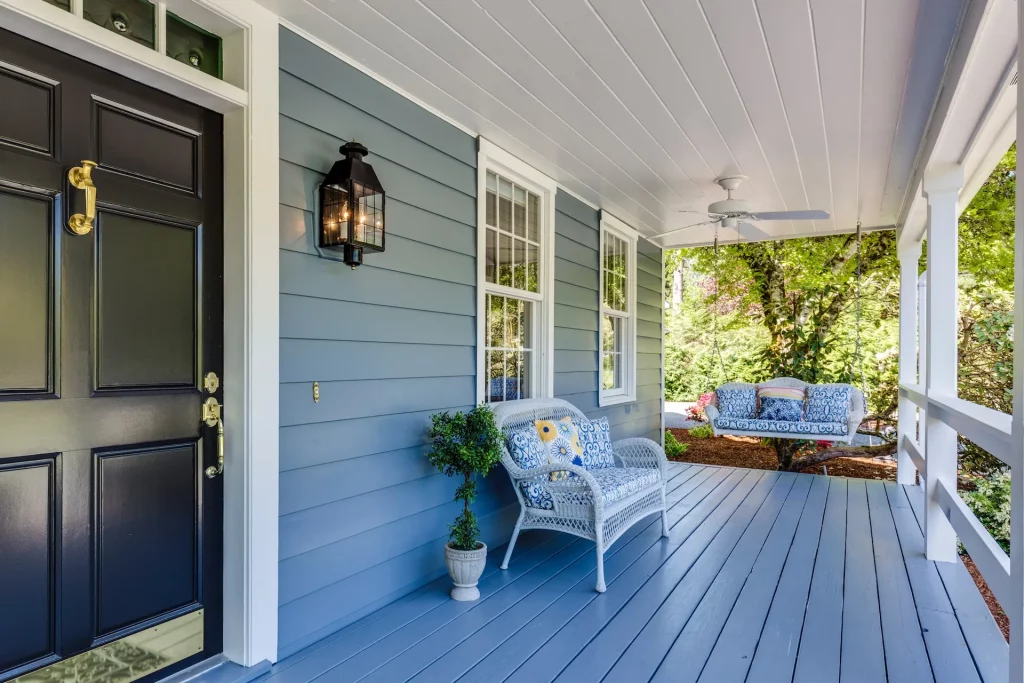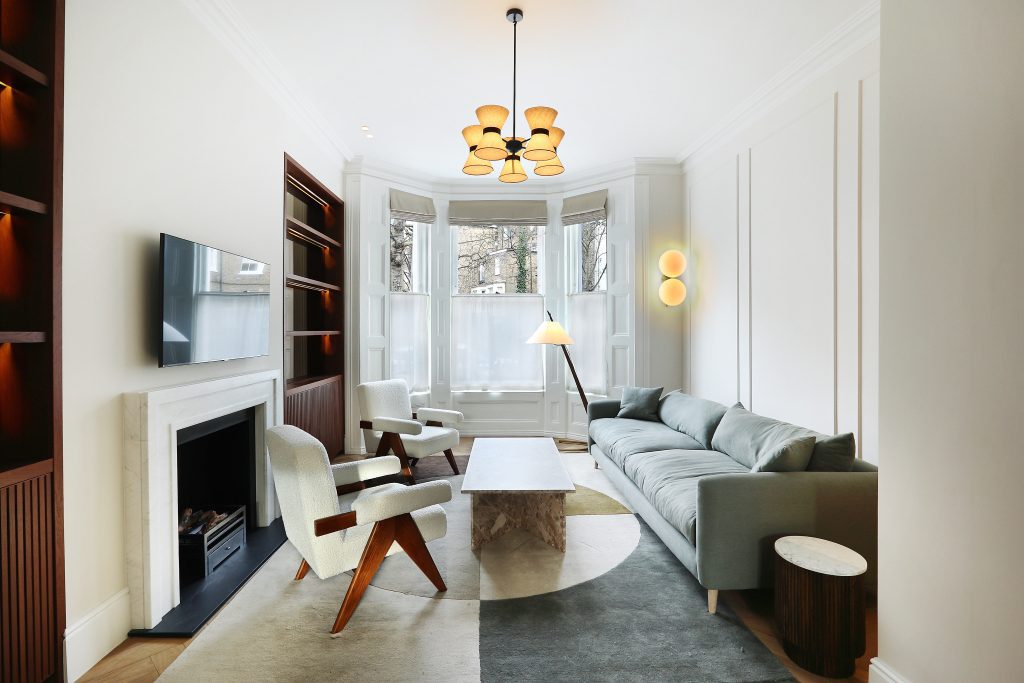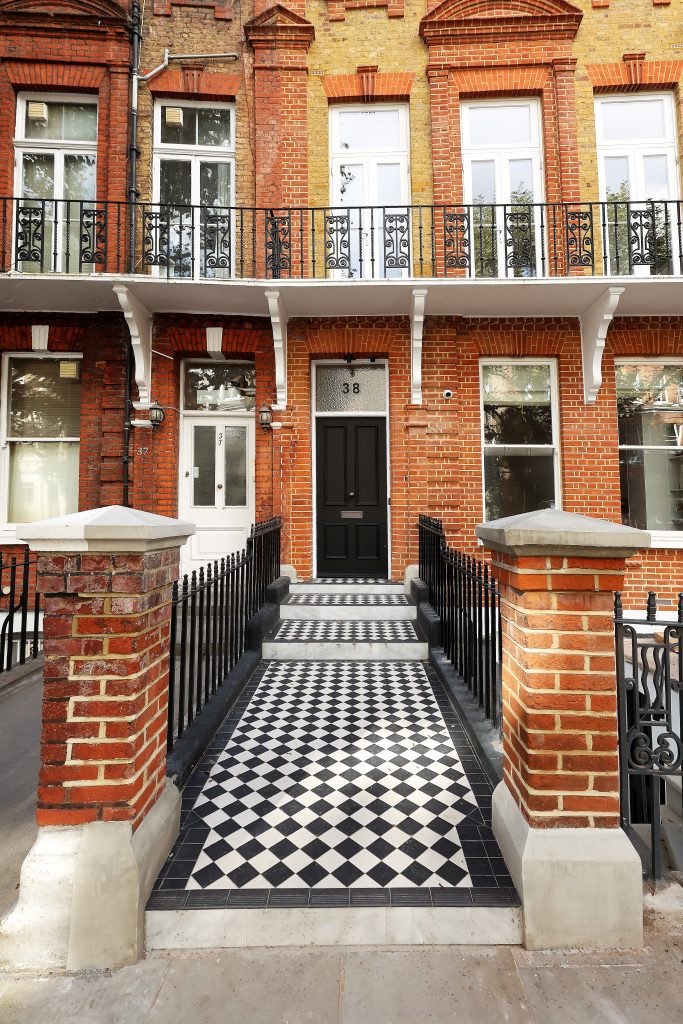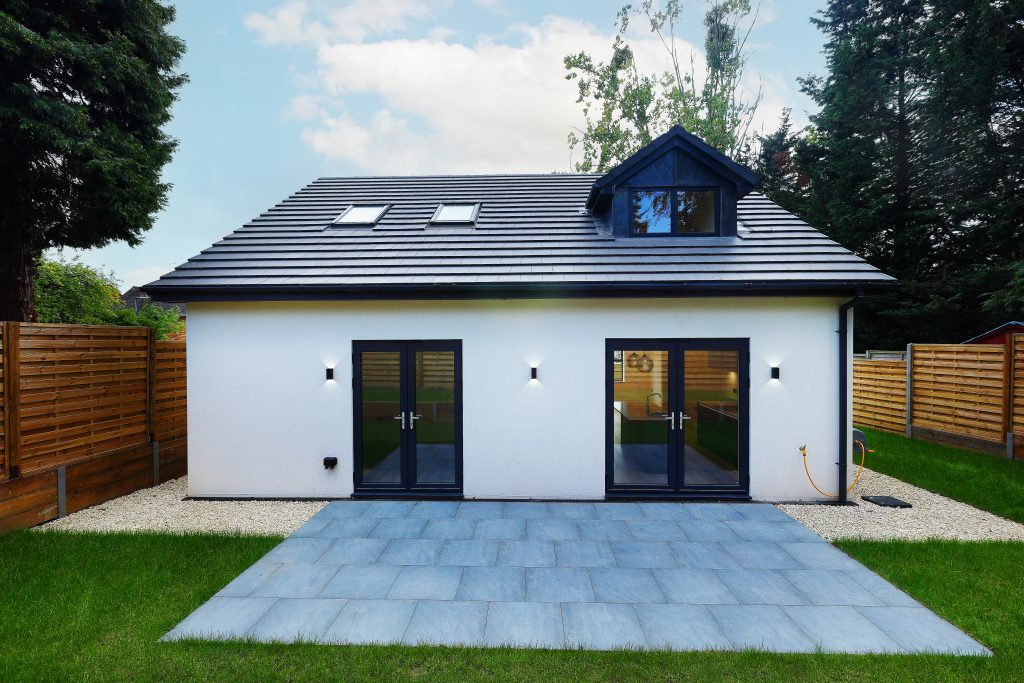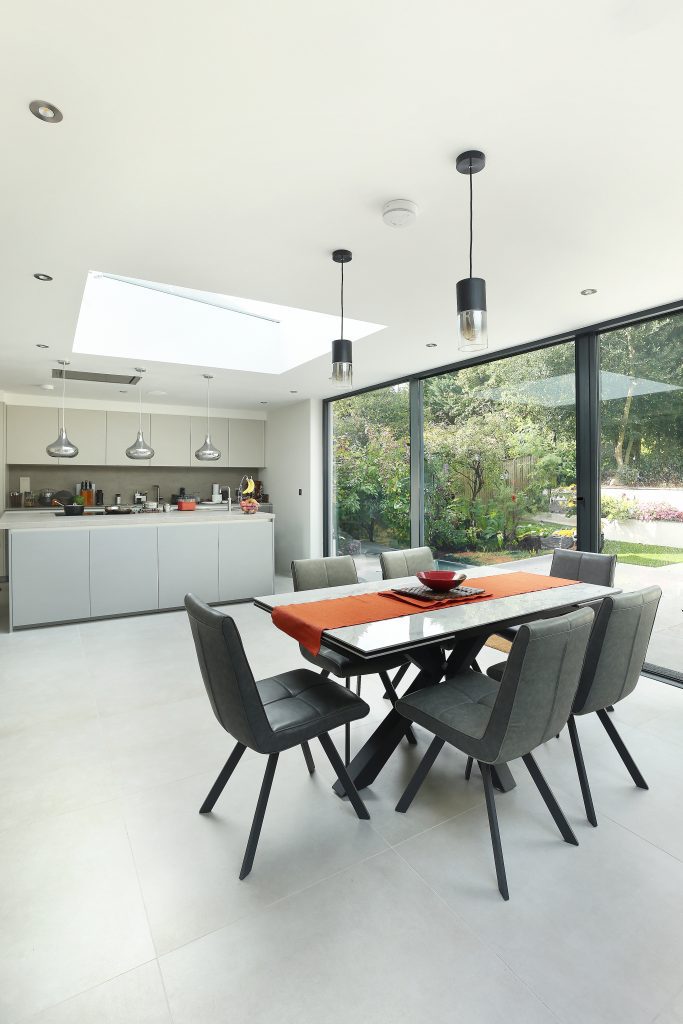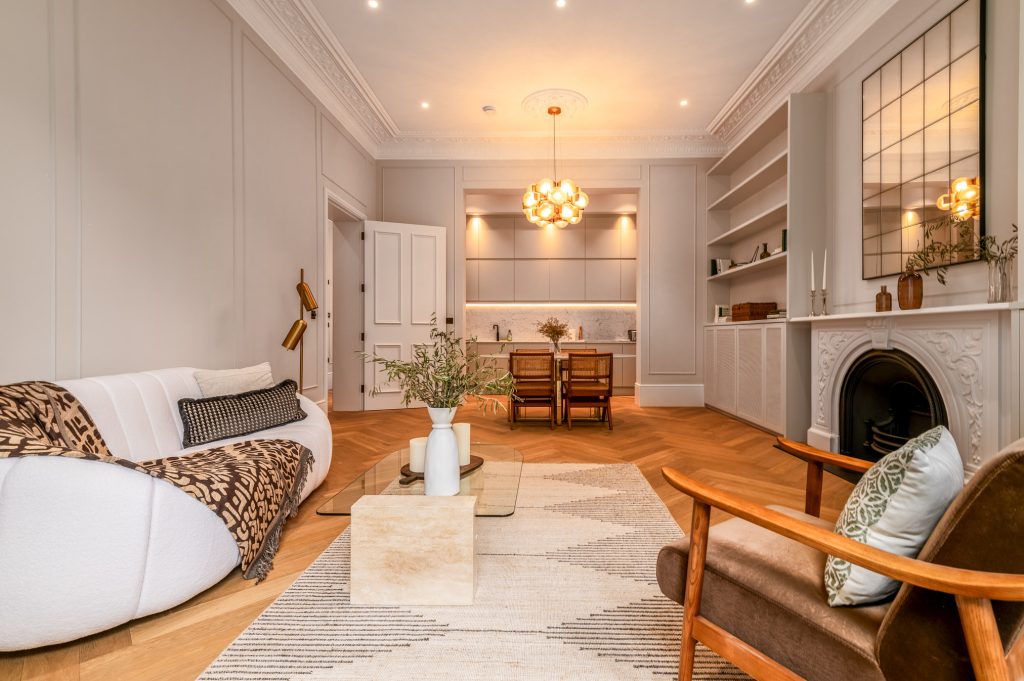Whether you want to enhance the functionality of your home or address safety issues such as roof leaks, foundation cracks, or other problems, renovating your house is a wise choice. House renovation will also increase your house value and improve efficiency.
Thinking about how to renovate a house? Even though the requirements will differ depending on your house remodelling project, the common steps in renovating a house are:
- Demolition and fix structural issues
- Secure the home’s exterior finishes and make them weathertight
- Focus on first fix (electrical, plumbing, and insulation systems)
- Plaster the walls and ceilings
- Focus on second fix (install lighting and other interior fittings)
- Emphasize decoration and finishing (paint, flooring, etc)
- Do snagging (inspect your home to find any defects or issues)
Hire A Professional Refurbishment Company
In order to remodel your house, you can simply hire a professional or an affordable house refurbishment company that will also recommend home renovation ideas. When hiring a refurbishment company, make sure to consider the following factors:
- Check the experience and expertise of the company
- Check whether they have the required licenses, insurance, and permits for renovating
- Ask for their portfolio and go through the online reviews
- Check their pricing
If you do not want to hire a refurbishment company, you can follow the below steps for remodelling your house safely.
Here is a brief list of the common steps to follow if you want to know how to renovate a house:
- Set up your estimated budget for the house renovation project
- Ensure you have proper home renovation permits
- Hire an experienced designer or home architect
- Start demolition and focus on structural issues
- Install drywall, plumbing, electrical systems
- Plaster the walls and ceilings and install floors
- Install fixtures and other fittings
- Add finishing touches
- Clean up and inspect to identify any issues
What is the difference between refurbishment and renovation? The primary differences include:
- Main purpose: Refurbishment is done to enhance the condition and aesthetic appearance of your home. Renovation is typically done to change the entire room or house structure in order to restore it to a good condition or due to any safety factors.
- Project Examples: Refurbishment projects include repainting, decorating, plastering, etc. Home renovation projects include changing the layout of the floor, plumbing, adding or getting rid of walls, etc.
Make A Plan
The first step is to create a detailed plan about all the renovations you want to make to your house. Think about whether you wish to remodel your whole house or renovate only some specific areas like the kitchen, loft, bathroom, etc.
It is best to make a list of all the renovations based on your priority. For instance, if you want to remodel your kitchen first, keep it at the top of your list. Without a proper home renovation plan, it will be relatively difficult to proceed with the remodelling.
Set A Budget
Establishing the budget is a vital part as it gives you an idea of how much you may have to spend on the renovations and plan your finances accordingly. It is better to get quotes from various house renovation companies in the UK to know the average cost of remodelling.
How much to refurbish a house? The average amount of money you need to renovate your entire house ranges between £38,000 and £74,000 or more. For painting your walls and ceilings, it will cost about £6,000 and for installing a new kitchen, the price is approximately £17,500. There are a few factors that affect your budget, such as the size of your house, contractor, etc.
Hire A Contractor
After making the renovation plan and setting up the budget, it is time to hire an experienced contractor for your home remodelling who can provide professional tips for house renovation. Make sure to hire only licensed and professional contractors. Avoid hiring the first contractor you come across, and make sure to reach out to four or more contractors.
It is recommended not to choose the contractors just because they offer the lowest price. You need to check the experience of these contractors, their quotes, project portfolios, working methods, project delivery time, online reviews, etc. Then, choose the best-rated contractor that offers reasonable pricing and a decent project timeline.
You can also request a certificate of insurance from the contractor. This is because legitimate contractors usually have workers’ compensation and liability insurance. In addition to that, discuss the payment schedule and then sign the agreement with the contractor.
What to do if your builder is taking too long in UK? If the contractor is making constant delays in renovating your house, you can state that you will terminate the agreement if the renovation is not completed as per the signed schedule.
Talk To Your Insurance Company
Before starting to renovate your home, it is best to reach out to your insurance company to talk about insurance coverage. This is because renovations may affect your insurance coverage. Thus, it is better to talk to your insurance company about your remodelling plans to make sure that your existing policy is adequate.
Secure Permits And Order Materials
Though not all types of home renovations need permits, there are certain kinds of renovations for which you need to acquire the proper permits before starting the project. This is because such renovations have to abide by the building codes and regulations.
Make sure to never start a home renovation without proper permits as there are high chances that your project will be stopped. As the homeowner, you are accountable for making sure that the renovations are done legally with permit approvals. If you do not know which renovations need licensing permits, you can consult your local municipality.
The licensed contractors have a solid understanding of building codes and rules and know which permits are applicable for which renovations. As a result, you can get expert help regarding permits from your project contractor.
It is time to order and gather the required materials, such as drywall, tiles, flooring, etc., depending on the type of your home renovation. Open every material and check if there are no defects. If you find any damaged items, return them. Buying better quality materials from a reliable supplier is best to make sure they will last for a longer period.
Start Demolition
Depending on the type of renovation, you must remove any outdated or existing flooring, walls, wallpaper, and other decor before beginning the project. For instance, everything in your kitchen must be removed if you want to renovate it completely, including the floors, worktops, cabinets, and other fixtures.
While demolishing, follow the safety precautions, and it is vital to address structural issues that may affect your home. After the demolition is complete, make sure to pick up all the debris and tidy the area as it will be easy to maintain safety when remodeling your home.
Work behind the walls
After removing the old finishes and materials, you can set up primary wall frames. It is time to work on the first fix that goes above the ceilings, under the floors, and behind the walls. What does first fix mean? The first fix includes plumbing, heating, and electrical systems.
Make sure to replace or fix faulty electrical components and install new electrical outlets. You can also install new pipes along with heating and air conditioning systems in your house. In addition, this is the right time to install insulation if you want. When the wiring work is done, you must make a few structural changes, like building extra frames and setting up walls and support beams.
Paint and install flooring
You can either paint the walls or finish the flooring first based on your priority and your contractor’s schedule. If you find any holes or small cracks in the walls, patch and sand the wall surface so that it will give a smoother finish. Apply the primer to the walls and then paint the surface as it will give better finishing that will make your house look better.
Make sure to apply two coats of paint and allow the paint to dry well before each coat. Use a paintbrush or a roller to avoid uneven thickness of the paint on the walls. As humidity will peel and crack paint, it is best to buy and apply high-quality paint that can handle humid conditions.
Prepare the subfloor and ensure it is even, clean, and does not contain any residue. You need to select the flooring material and install the flooring in your house. There are numerous types of flooring materials available, such as hardwood, laminate, tile, vinyl, etc.
Install cabinetry
You need to install cabinets next, which are a vital part of any kitchen, bathroom, or laundry room. They are essential for storage purposes and also add a decorative aspect to your home. Make sure to install the upper cabinets first and then the lower cabinets.
After installing the cabinets, add their knobs, hinges, pulls, and other hardware. It is best to inspect the cabinets and the hardware to ensure they are safely installed and are working appropriately.
Add Finishing Touches
Lastly, you need to add finishing touches, which are the fine details that will enhance the aesthetic appearance of your home. You can install lighting fixtures, new window treatments, and many more. Do you need to redecorate after new windows? You can add furniture, put home decor items, and hand paintings to decorate your renovated home.
Make sure to add trim and mouldings to improve the decoration. How to make front of house look better in UK? If your house has a front yard, you can landscape it by planting trees and plants, making tone pathways, adding rock and mulch, adding gravel in patterns, etc.
FAQs
How long does a house renovation take?
The total amount of time needed to renovate your house is based on various factors, such as:
• The scope of your renovation project
• The size of your house
• The complexity of the project
• Contractor availability
• Weather conditions, etc.
Here is a brief list of how long it will take for different renovations:
• Entire home renovation – 16 to 24 weeks or more if your home is big.
• Bathroom renovations – 3 to 6 weeks
• Kitchen renovations – 4 to 10 weeks
• Loft conversions – 7 to 12 weeks
• 1-2-storey extensions – 8 to 16 weeks
What should I fix first in my old house?
Old houses are often vulnerable to structural issues, so it is best to fix the foundation issues and roof of your house. Look for things like twisted hanging doors, uneven surfaces, bending walls, and foundation cracks. Inspect for leaks, cracks, or holes in your roof. Building a new house is less costly and saves you plenty of time if your home is not ideal for renovation.
Who can do my house renovation for me?
As licensed contractors have the expertise and resources to renovate your house, it is recommended to hire them. Nevertheless, you can also do some minor renovations by yourself like painting the walls, adding fixtures, etc.
